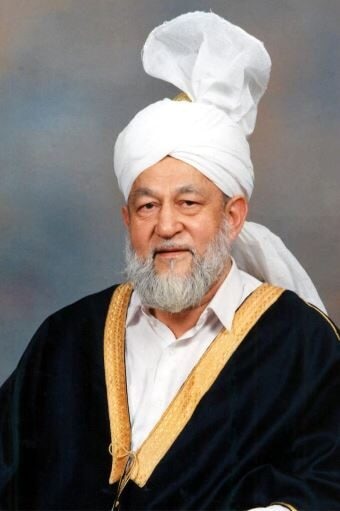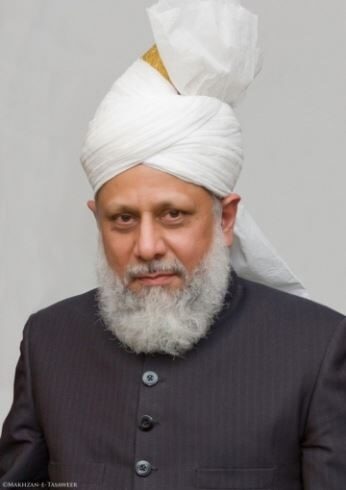Romaan Basit, Graduate, Jamia Ahmadiyya UK
The recent attempt on Salman Rushdie’s life has reignited the age-old debate around blasphemy and the Muslim reaction. He was stabbed – by an allegedly “proud” Muslim – as he was about to speak at an event in New York. He is still in critical condition.
It is argued that Rushdie penned his highly offensive and controversial novel, The Satanic Verses using his right to “freedom of speech”. Although it caused a great deal of offence to the Muslim world, the question remains, is such violence an Islamic response to blasphemy?
A Japanese translator of his book was killed, the Italian and Norwegian translators both severely attacked, and now, Rushdie himself has been stabbed. All this begs the very important question asked above.
Much has been written on the topic of blasphemy and whether it is a punishable offence. The true Islamic stance, in light of the Holy Quran and the example of the Holy Prophetsa, is that there is actually no physical punishment for blasphemy. The two most authentic – and sacred sources for Muslims – strongly condemn all such reactions and class them as un-Islamic.
Hazrat Mirza Tahir Ahmadrh, the fourth Khalifa of the Ahmadiyya Muslim Community, writes:
“No physical punishment is prescribed for blasphemy in Islam, despite the commonly held view in the contemporary world. Having studied the Holy Quran extensively and repeatedly with deep concentration, I have failed to find a single verse which declares blasphemy to be a crime punishable by man.” (Islam’s Response to Contemporary Issues, p. 38)

The Ahmadiyya Muslim Community has always publicly denounced such behaviour, yet, the media does not seem to find it spiced enough to be picked up. Instead, sensational stories of violent retaliations and decrees of death continue to hog the news headlines.
Satanic Verses and the Ahmadiyya response
Hazrat Mirza Tahir Ahmadrh was once asked if he supported the fatwa (edict) issued against Rushdie, and whether a violent reaction was justified. Rejecting the fatwa, he explained that the public must be made aware of the peaceful teachings of Islam. He said it seemed that the press did not like the peaceable version of Islam, as they continued to focus on violence-inciting decrees like that of Khomeini. Huzoorrh said that he had given this answer in a recent conference with the press. Referring to this, he explained:
“If I had said whatever Khomeini had said, it would have been published in the headlines that ‘the Head of the Ahmadiyya Community fully supports this’, and every paper would have covered it. But because I have rejected his fatwa, and have explained with reference to the Holy Quran that no man has a right to punish anybody for any blasphemy, [I told them] that it is not going to be published, and it wasn’t. The next day it was as if no conference had even taken place […]” (Question and Answer Session with Hazrat Khalifatul Masih IVrh, 24 March 1996)
The response of the Ahmadiyya Muslim Community to Rushdie’s book was the most pragmatic, most powerful, peaceful and, above all, most Islamic in its nature. Instead of resorting to violence and bloodshed, Hazrat Mirza Tahir Ahmadrh instructed that a book be written as a rebuttal. This research task was assigned to Arshad Ahmedi Sahib, who authored Rushdie: Haunted by His Unholy Ghosts.
Not only did this serve as a refutation to Rushdie’s misconceptions, but also as a means of educating the masses about Islam and its founder, the Holy Prophet Muhammadsa. In this way, the public was made aware of true Islam and was well received.
Legacy continuous
Such a response was directly in line with the example set by the founder of the Ahmadiyya Muslim Community, Hazrat Mirza Ghulam Ahmadas of Qadian. During his time, a book titled Ummahatul Mominin was written by a Christian missionary, Ahmad Shah Shaiq, ridiculing the character of the Holy Prophet Muhammadsa.
Muslims across India were enraged, but the Promised Messiahas – most hurt by this mischief – condemned any sort of violence. He advised that the only viable response was to respond to the allegations raised so that the general masses could be educated on the reality of Islam and saw the true picture. He strongly believed that such attacks stem from misunderstandings about Islam and the Holy Prophetsa and the tides of such blasphemous attacks could only be turned around by demystifying both the religion and the character of its founder.
Rangila Rasul and Vartman
Similarly, in the time of the second Khalifa of the community, Hazrat Mirza Bashiruddin Mahmud Ahmadra, more inflammatory anti-Islam literature kept coming to the surface. This included Rangila Rasul by Pandit Chamupati in 1924, Sair-e-Dauzakh (published in Vartman magazine) in 1927. Hazrat Mirza Bashiruddin Mahmud Ahmadra responded by writing an article which was published in Al Fazl and plastered in form of posters across most parts of Punjab. The article urged all Muslims to unite and voice their sentiments to official authorities. As a result, the authors were brought to account for their offensive behaviour, and, hence, the honour of Islam was upheld.
Practical guidance by Hazrat Mirza Masroor Ahmad
More recently, in 2006, Pope Benedict XVI delivered a lecture at the University of Regensburg in Germany, in which he painted Islam in a very negative light. He attributed things to Islam, the Holy Quran and the Holy Prophetsa which were simply untrue, causing much distress to Muslims. In defence of true Islam, the current and fifth Khalifa of the community, Hazrat Mirza Masroor Ahmadaa, immediately refuted the erroneous statements made by the Pope in his sermons. These have since been published in book form, titled Through Force of Faith? Huzooraa said:
“May Allah show mercy and protect the world from discord and turmoil. Ahmadis should always pray to this end and, with prayers, they should also respond to the questions that were raised in the lecture that the Pope delivered. We have only these two weapons that we can use, and no other reaction has ever been shown by an Ahmadi, nor will it ever be, God willing.” (Through Force or Faith, p. 2)

In recent years, whenever a publication has been blasphemous towards the Holy Prophetsa of Islam, Hazrat Mirza Masroor Ahmadaa has been at the forefront in guiding the Muslim Ummah in the right direction – demystifying Islam’s peaceable teachings and not resorting to violence. He has explained, time and again, that violent reactions only fetch negative publicity about Islam and its adherents.
As followers and ardent lovers of the Holy Prophet Muhammadsa, Ahmadi Muslims feel the pain that blasphemous attacks bring with them. Yet we respect the teachings of Islam and keep our responses within the bounds set by Allah and His Messengersa.
The way the Ahmadiyya Muslim Community has responded to such acts of blasphemy has proved to be the most pragmatic and fruitful method. To see the enlightening responses of Hazrat Mirza Masroor Ahmadaa in this current day in detail, readers might want to visit the following:
www.alislam.org/book/blessed-model-holy-prophet-muhammad-caricatures

